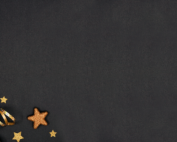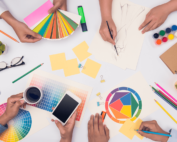What do pink poodles, scented pens, blindfolds, bouncy balls and visual cards all have in common? They are all tools that, amongst others, we use within Underscore to help our delegates understand and develop their skills in creativity and innovation. But what are creativity and innovation?
Creativity Is a Skill
To ‘create’ something is to bring it into existence, something that was not there before. Edward de Bono in his book ‘How to have creative ideas’ describes creativity as a skill that everyone can learn, practice and use. I like this definition as it encourages me to think that we can all be ‘creative’.
Think about this for a moment. What is the most creative thing you have ever done or seen? The outputs from creativity are all around us. Some are more creative than others; we know this as there is evidence of this everywhere in the world. I use the words ‘more creative’ cautiously here as the measure of creativity is highly personal and depends on the ‘value’ someone puts on the innovative output of the creative idea. Innovation is the transformation of creative ideas into visible/tangible results.
The Impressionist Movement in the late 19th Century was brought into existence by Vincent Van Gogh, Edgar Degas, Edouard Manet, Claude Monet, and Pierre-Auguste Renoir who pioneered a new style of painting “characterized chiefly by short brush strokes of bright colours in immediate juxtaposition to represent the effect of light on objects” (source dictionary.com). This style was innovatively applied to their paintings and today we have master works of art such as Claude Monet’s ‘The Water Lily Pond’ and Vincent Van Gogh’s ‘Sunflowers’.
In the Army we often saw great creativity come out of the poorest societies – creativity is at its best when there is a driving need and nothing exists to fill it. For example when serving in Angola on a United Nations Operation we would take our rubbish to the tip every day, only to find the local children trying to sell some very creative inventions to us the next day made up from the very rubbish we disposed of the previous day. I never knew there were so many inventions that could emerge from polystyrene cups! I loved their enthusiasm and creativity; they were persistent, they asked us why we didn’t like something they presented to us, they listened to us, went away and created a ‘product’ that was more suitable to our needs. These children were very creative, innovative, adaptable and good listeners. They also demonstrated an excellent customer-centric approach when researching, creating, developing and selling their products – I am sure there are many lessons here for sales and R&D departments!
Diversity – a Key Ingredient for Creativity
Diversity is another key ingredient in becoming a creative and innovative organisation. A diverse workforce generates greater collective thinking and a wider range of ideas. The more diverse your workforce, the more innovation you are likely to witness. However, it is important to have a sound process supporting this workforce to harness the creative ideas and help turn them into tangible results. Companies who want to become better at Creative Problem Solving and introduce new ways of thinking, can do this by improving the facilitation skills of their workforce, introducing creative problem solving tools and techniques and raising awareness of ‘people centric’ tools such as ‘Design Thinking’ to help people work through difficult problems, generate creative ideas and understand how to evolve these into innovative products that are able to meet our customers’ needs. We are also working hard to create more innovative work environments to stimulate greater collaboration and allow people the space to use and apply their creative skills. On top of all this we are having fun – a very important factor.
Creativity is in us all, I would challenge you to think about this. What can you do to unleash your creativity, to improve the creativity of your team and to improve your organisation’s performance through creativity and innovation?
Read Next
Design Thinking in L&D
Many feel that L&D is slipping behind the times in terms of delivering what learners need; we discuss how design thinking could help to reinvigorate the field and help it better meet the needs [...]
Thinking About Thinking
We’d all like to believe we think in the most effective way, but the truth is we all take shortcuts, make assumptions and generally do what we can to avoid thinking about things in [...]
Leadership in a Changing Workplace
As workplaces change it is necessary for the leaders of the future to do so as well; the dynamics between employee and employer are slowly shifting, and teams are no longer looking for a [...]
New Year, New Challenges
For many organisations the beginning of a new year is the start of a new phase in their development, most will have set out targets and aims for the coming 12 months (or possibly [...]
The DNA of SMART Working
Out and about at work and in my workshops, one of the topics that comes up regularly is smart working. Nearly every company large or small is facing this challenge today. Businesses are facing [...]
What Is Design Thinking and How Can It Help With Innovation?
One of the biggest challenges for many organisations is how to remain competitive in an ever-changing world. Design Thinking is a popular method for teams and organisations looking to embrace innovation and adaptability and [...]






